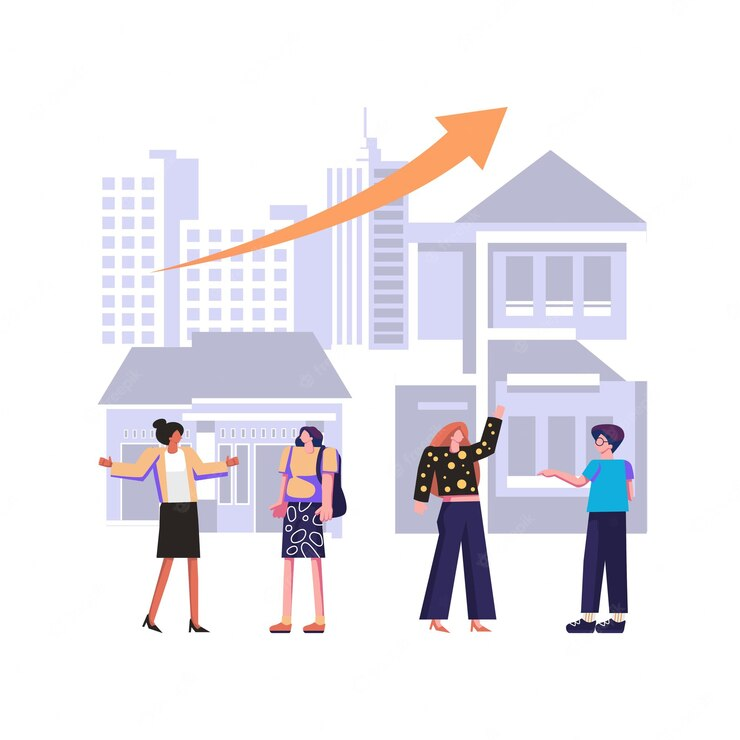The real estate industry of the Philippine economy is highly profitable and makes a considerable contribution to the country’s gross domestic product. The good news is that the real estate industry in the Philippines has constantly developed over the past several years, and it is expected that the market will remain the same in 2023.
On the other hand, worldwide real estate markets have fallen behind due to recessions, slow economic recovery processes, and other causes. This has caused a significant gap in performance. On the other hand, this did not have any significant impact on the market in the Philippines. In fact, it has demonstrated the complete opposite, and this is despite the fact that recent world events have slowed down. The expansion of the real estate market in the Philippines is contingent on a number of factors, including market trends, population growth, economic expansion, and infrastructure development.
Homebuyers and real estate investors would greatly benefit from having an understanding of the industry projections and trends that will affect the Philippine real estate market in the near future because it is both vital and useful to have this knowledge. The following are some key forecasts for the Philippine housing market in 2023 and in the future.
Read Also: Philippine Property Recovery Expected to Persist in 2023
What are the 5 real estate trends affecting real estate in the Philippines in 2023?

Since the pandemic’s recovery, the real estate market in the Philippines has been going up for the last couple of years. But what will happen next? Before buying real estate properties, it’s important to look at trends and facts to figure out what will happen in the future. In this article, we’ll take a close look at real estate industry predictions for the Philippines. We’ll look at things like population growth, government programs, and economic stability. Read on before taking the next step, whether you want to buy or sell.
1. Rise in Hybrid workplaces
Because of the rise in popularity of hybrid workplaces in the Philippines, the need for new retail space is expected to rise.

As a direct result of hybrid work arrangements, retail space is often purchased in Metro Manila, despite the fact that there are growing worries regarding the availability of fewer office spaces. Businesses that outsource their work also contribute to the growth of this need. Property values and retail space will continue to increase over time as a result of increased employment rates and wages, which will boost demand for new homes.
Luckily, real estate developers such as Bria Homes offer aspiring homeowners homes that are safe, well-designed, in good locations, and of good quality. It is currently working on a variety of projects in 50 towns and cities, all of which are set to grow within the next few decades.
With Bria Homes, you can choose from a variety of housing unit choices and models that fit your needs, such as a home office space that is easy to set up or a home that is close to work and easy to get to by public transportation. Bria Homes sells affordable houses and lots that you can buy at any time!
2. The real estate market will keep growing.

The Philippine real estate market has continued to expand even in the midst of the economic instability brought on by the COVID-19 outbreak. In the next five years, the real estate market in Philippines is expected to proceed in the same manner it has been, with the annual growth rate estimated to be 5.4%, as stated by the real estate forecast from Colliers Global. It is anticipated that the market would reach an average value of $900 billion by the year 2023, which will place it among the most significant real estate markets in Southeast Asia.
3. Both commercial and residential properties are expected to remain in high demand.

It is anticipated that there will be a continued high demand for residential and commercial properties in the Philippines over the course of the next five years. The number of homes that are expected to be sold will thrive by between 5 and 8 percent while prices remain unchanged as a result of strong economic growth and an increased demand for residential properties.
In addition, it is anticipated that there will be an increase in demand for apartments and condominiums, while the prices of single-family homes will continue to be more affordable than they have been in previous years.
The good news is that you can have an affordable house and lot that have a modern design that is perfect for the emerging trends in house interior and exterior design. As the value of house and lot increases in the future years, it is a great investment for homebuyers to buy a property that is affordable. Bria Homes offers affordable houses and lots that are perfect for you and your upcoming plans, whether it is an investment property or a home in the future!
4. The number of overseas investments is growing.

There has been a rise in the number of international investors participating in the real estate market in the Philippines, with Japanese corporations demonstrating a rekindled interest. Other major trading partners have also expressed interest in investing in the Philippines, and these plans should be bolstered by the trade agreements that the Philippine Senate is anticipated to approve in the near future.
The research also highlighted that large investments had been made in the areas of food production, online commerce, and logistics throughout the course of the previous calendar year. In addition, the development of new industrial parks and other facilities in Central and Southern Luzon, the Philippines, may give real estate brokers further opportunities to negotiate improved property lease terms and pricing for warehouses. These new projects point to positive indicators of expansion for the real estate sector in the Philippines as well as for the economy as a whole.
5. Tourism in the Philippines will recover.

It is anticipated that demand for real estate properties in the Philippines will be fueled by the ongoing revival of the tourism industry in the country. The demand for hotels, resorts, and other types of lodging is growing as a result of the increase in the number of people traveling both domestically and internationally. Real estate investors now have the potential to benefit on the increased demand in the tourism industry as a result of this development.
One tourist spot in the Philippines is Calamba Laguna. Calamba, Laguna, is a first-rate city that is only 54 kilometers from the heart of Manila. Calamba has been called the “Resort Capital of the Philippines,” and it is now a “first-class component city in the province of Laguna” because of the increasing demand for real estate there. This means that on the weekends, residents of Bria Home and Lot Laguna can unwind at one of the numerous nearby hot spring resorts, while during the week they can experience all the excitement of city life.
Bria Homes Calamba is a 22-hectare residential house development in Brgy. Baadero with a typical suburban feel and a lovely view of lush greenery. The house property offers its residents the best of both worlds, with easy access to Metro Manila and the peace and quiet of the province.
House and lot packages and other properties in one of the best areas of the Philippines are now available at attractive prices. Calamba house and lot packages from Bria Homes start at just 10,000 PHP monthly!
As the economy recovers, home values and real estate prices tend to increase.

With the full reopening of the economy following the lifting of the COVID-19 quarantine and lockdown protocols in the fourth quarter of last year, the upward trend in housing prices in the Philippines continues. The most recent Bangko Sentral ng Pilipinas (BSP) Residential Real Estate Price Index (RREPI) indicated a 7.7 percent increase to 151.9 in the fourth quarter of 2022, from 141 in the same quarter in 2021.
The index has been on the rise from the first half, when it was at 139.8, through the second half, when it was at 142.1, and into the third quarter, when it was at 148.6, as the economy has gradually reopened since the stringent lockdown was reinstated in January in response to the rising number of COVID-19 infections caused by the extremely contagious Omicron variety.
Duplexes saw the largest price increase (42.9% to 229) from October to December, followed by condominiums (12.9% to 199.3) and single-family detached or attached homes (10% to 126.2). These were sufficient to counteract the 6.8 percent drop in the townhouse index to 199.3 in the fourth quarter.
The RREPI was introduced in the first quarter of 2016 and serves as an indicator for evaluating the state of the country’s real estate and credit markets. The fourth quarter of last year saw a 16.1 percent increase in property values in the NCR, from 151.1 in the same quarter in 2021 to 175.5 as families began to return to the city from the provinces in light of the resumption of on-site work and face-to-face classes.
Single-family detached or attached homes increased in value by 18 percent to 107.7, while condos rose in value by 15.9 percent to 204.3, and townhomes rose in value by 8.5 percent to 140.
Outside of the NCR, home prices rose by 4.5 percent, from 136.7 to 142.9.
Outside of the NCR, duplexes saw the largest price increase, at 46.4%, to $291.2 per square foot; single-family detached or attached homes followed with an 8.8% increase to $128.5 per square foot; and condos saw a 3.9% increase to $183.60 per square foot.
From October to December of last year, townhouse prices in the provinces dropped by 12.1%, to an average of $237.1 per square foot.
The Monetary Board of the BSP has hiked key policy interest rates by 425 basis points, bringing the benchmark rate from an all-time low of 2% to a 16-year high of 6.25%, in an effort to curb inflation and stabilize the peso.
The average appraised value of newly constructed homes in the country decreased from P84,589 per square meter in the third quarter to P74,776 in the fourth quarter, according to the country’s central bank.
Values in the NCR averaged P127,175 per square meter, which is well above the national and non-NCR averages of P49,475 per square meter.
Read also: Bria House and Lot: What increases your home’s value?
For investors, what does this mean?

The real estate market is impacted by factors such as demographics, interest rates, and government policy. As an investor, you should anticipate that 2023 will be a favorable year for investments due to the strong fundamentals of the macroeconomy. Having said that, increasing interest rates are a factor that is unfavorable for both local and international buyers and sellers because it drives up the price of homes but does not help the bottom line for the seller.
Even if there is a decrease in demand as a direct result of high loan rates, the fact that continuously building on and developing land is, and will continue to be, a viable business enterprise and major business district in the long run will not be affected.
The cash flows that are created by developed land regions are one reason for this phenomenon. If you believe that the current moment is not the best time to make an investment, you should be aware of the fact that historically speaking, the real estate market has shown to be a profitable business venture in the long run, mostly as a result of the steady cash flows it generates and the appreciation that occurs over time.
Cash flow is only going to improve over time as you pay down your house loans and develop more equity in your home, and history has shown that real estate values tend to climb substantially over time. This means that when it’s almost time to sell, you might normally anticipate making a profit from the sale of your property.
The future of real estate in the Philippine real estate market

The real estate market as a whole is anticipated to expand at a rapid rate as a result of rising demand and improvements in space quality. Not only are condominiums being constructed in better locations, but a current trend has started equipping modern residences with smart technology that enables users to commence daily procedures with the press of a button or voice activation. This technology is allowing condominiums to be built in better places than ever before.
In the future, we will finally see the full integration of digital technology. The integration of technology with real estate will usher in a new era of purchasers who are searching especially for convenience and comfort above all else. This tendency will have an impact on the entirety of the house-buying process, from virtual home tours to improved quality options.
The pandemic helped consumers realize the intrinsic benefit of investing in their houses during the housing market recovery. This necessitates an investment in “smart home” features and services, such as climate control, lighting, e-commerce, and security systems, on the part of purchasers who are well versed in technology. It is likely that you will want to have this regardless, despite the fact that it demands improved Wi-Fi internet coverage and broadband services throughout your entire house and lot. Therefore, this is not really a problem.
Read also: The Impact of the Philippine Real Estate Market on the Local Economy
A property that is worthy of investment for the future
As the house value has increased over the past few years and will increase more in the future, it is truly worth it to invest in a house and lot. It is a wise decision to invest in a home that has high quality, is affordable, is easily accessible with transportation, and is near the workplace. Real estate developers such as BRIA Homes cater to all the needs of the future homeowner!
Bria Homes is now working on more than fifty different projects around the Philippines, and this number is expected to continue growing. The homes offered by Bria Homes are projected to provide homeowners in a country with a significant return on investment due to the fact that many of the new communities will be placed in strategic locations along ongoing and upcoming infrastructure projects that are designed to make it much simpler for many Filipinos to commute and travel!
Written by Darlene Semera





